The Kommos Virtual Reconstruction Project
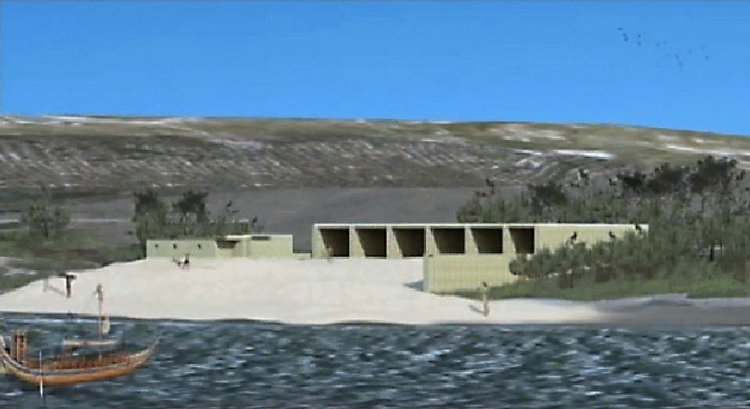
By Alexander Assaf
Every perfect traveler always creates the country where he travels.
~Nikos Kazantzakis
The bright sun beat down on the plains overlooking the distant Rocky Mountains. In the midst of this landscape ouzo flowed, the crowds dined on saganaki (flaming cheese), traditional Greek dancers shouted, “OPA!” and I couldn’t tell if I was https://www.kommosconservancy.org/wp-admin/edit.phpactually in Greece or in Denver at the annual Greek Festival on a sweltering day in June of 2011.
Ducking into the nearby Cultural Center to escape the heat, I encountered more things Grecian: crafts and trinkets of Greece’s past, colorful landscapes of the Grecian Isles, art works galore, Greek foods. Though each and every vendor displayed different wares, they all sought to share their love and understanding of their beloved Greece — capturing its sights, sounds, tastes and smells for all to experience without ever having to set foot on Greek soil.
One booth in particular caught my eye, transporting me back to an archeological site I had visited and studied during college, a site on the shores of the Libyan Sea on the Island of Crete known as Kommos. It was at this booth I had the good fortune of meeting James Stratis, founder and Executive Director of the Kommos Conservancy, a non-profit 501(c)(3) organization committed to the preservation, conservation and educational development of the Kommos archaeological dig site. Kommos was a major Bronze Age Minoan Harbor complete with town, homes, palaces, shipsheds, storage complexes, a Greek sanctuary. The excavations from 1976 to 1994 by Professors Joseph and Maria Shaw revealed the treasures of a long-lost culture.
The Kommos Conservancy envisions that one day Kommos will be a self-sustaining destination and archaeological park benefiting scholars and attracting archaeological tourists to the shores of Crete. I viewed his fascinating display that day at the Festival — a combination of photos of the excavations and site drawings. It was a straightforward depiction of the ruins but what did Kommos really look like, within it’s period of significance / back in its day?
The Conservancy understands that old-fashioned displays would probably not convince viewers to actually tour the ancient harbor site; they believe the future conservation of Kommos lies in computer visualization technology. It was James’ enthusiasm for this concept that prompted me to join their cause as a volunteer project manager of virtual reconstruction. I am happy to say that over the last eighteen months, we have moved forward towards the goal of creating Kommos’ virtual reality.
Virtual and visual inspiration for this project is everywhere — from Sim City, one of the oldest and most successful computer games, mesmerizing game-players since 1985 and the magic of Pixar Animation Studios, creator of virtual worlds and film characters amazing audiences worldwide. Then there is the work of another animation company, Second Life, which utilizes an on-line simulation platform to propel viewers to virtual destinations. It is the artistry of this particular reconstruction model that inspires us today. Stratis closely follows the application of virtual reconstruction to other archeological sites. Digital recreations of Athens, Giza, Knossos, Kavousi, Pavlopetri, and Malta — to name a few — are bringing antiquity to life for the modern-day Internet viewer.
Imagine the educational possibilities! Sitting at your computer, it will be possible to study by strolling around virtual Kommos and the world of the Minoans, an ancient people who pre-dated the Greeks and gave cultural framework for western civilizations to come. You will be able to study the material culture and architecture of its buildings. Furthermore, virtual reconstructions can be updated as further research is conducted and as new evidence is uncovered.
Through the re-creation of Kommos will come deeper knowledge of the lost Minoan culture.
Or as Nikos Kazantzakis, arguably the most important and most translated Greek writer and philosopher, wrote: “The landscape affects the human psyche – the soul, the body and the innermost contemplations – like music. Every time you feel nature deeper you resonate better with her, finding new elements of balance and freedom….” Seeing Kommos recreated is understanding Kommos better.
As with most endeavors in life, nothing is simple; virtual reconstruction is time-consuming and costly. With the collaboration of Ekaterini (Kat) Vlahos, Associate Professor of the College of Architecture and Planning at the University of Colorado Denver and the Director of the Center of Preservation Research, we have explored a number of options (LiDAR) and made real progress.
Fortunately, Kommos is painstakingly documented in a comprehensive seven volume series written and edited by Professors Joseph & Maria Shaw; with contributions by several other scholars in an online library, T-Space, by the University of Toronto. Our baseline CAD drawings of the topography were provided by Greek architect/ educator Sonia Mavromati who also designed the two roof shelters for endangered structures within the southern area of the Kommos exaction.
By combining all research, literature, drawings, photos and the schematic and development Master Plan, we had sufficient materials to generate a three-dimensional reconstruction of Kommos for three distinct periods during which Kommos was inhabited. This will enable us and our future virtual architects to refine and expand the project as necessary. Professor Vlahos and three architecture grad students have already virtually constructed three distinct buildings, within the southern area of the excavated site from three different time periods at Kommos and these can be found through this YouTube link and on this Kommos Conservancy website page.
While all this is a giant step in the right direction, our work just begins. Through virtual reconstruction, the place called Kommos will live again. Greater on-line understanding will grow wider interest in the continued preservation of this very real and vital archaeological site. And knowledge will ultimately lure the traveler to visit and support Kommos on the stunning south central shore of Crete.
We appreciate the contributions to the first phase of the Kommos Virtual Reconstruction Project by the following institutions and individuals: excavation architect Giuliana Bianco, University of Toronto Librarian, Gabriela Mircea, Sonia Mavromati, University of Colorado, Kat Vlahos, SketchUp drafters Joe Wynn, Catherine Brown, Keith Schmelzer, editor Holly Joyce and web editor Robert Bigelow.
You can follow us on Twitter (@KommosAP) or join us on Facebook (Kommos Conservancy).
“Μπορείτε να μας ακολουθήσετε στο Twitter (@KommosAP) ή στο Facebook (Kommos Conservancy).”

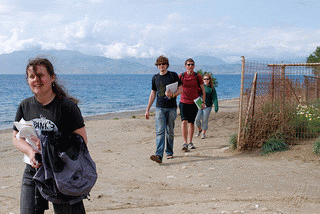
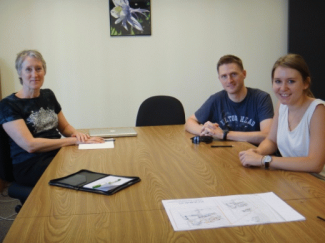
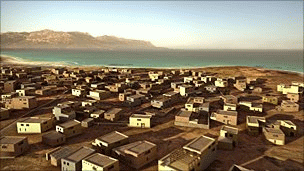
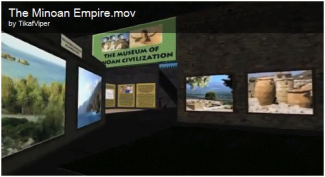
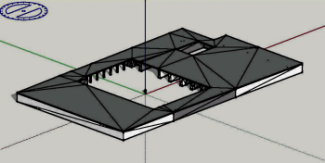
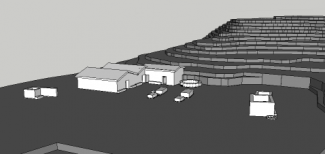
that’s what we’re talking about~!
must visit with augmented reality handheld!!
http://news.ubc.ca/2014/10/24/street-view-for-the-bronze-age/
wow incredible, Kommos would make an amazing place where the sea, habitation, commerce, industrialization and religious center all came together. A display such as this would carry the educational outreach into wider popular distribution. Help us to get there.
http://vimeo.com/71148018
The actual historic structures – Here yesterday, gone today: http://www.berkshireeagle.com/news/ci_27805619/
“These add to our understanding of the site in general and the general context in which the object(s) were found. “
“Reconstructing ancient buildings was as much of an art as it was a matter of science: sooner or later, you have to make choices, and you need to be able to argue why you made one decision instead of another.”
Here’s an interesting article on virtual reconstruction that has been a topic of conversation for physical reconstruction for a longer time:
http://www.karwansaraypublishers.com/pw/ancient-history-magazine/blog/reconstructing-the-past/
Whether it was Sir Arthur Evans reconstructing the Palace of Knossos or any other site the computer, all of the same benefits and problems occur. The reconstructions aid in the general public’s understanding of the use of buildings, increasing popularity and interest. Of course, when wrong, it opens the door to criticism. Despite some of Evan’s incorrect placement, no one can argue the great strides that he made to improve the entire field of archaeology.
All in all, virtual reconstructions provide the same benefits plus the added benefits of not destroying any of the existing remains and the ability to recreate models without additional damage (and for far more sustainable budget!) to existing remains once new information is discovered.